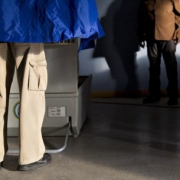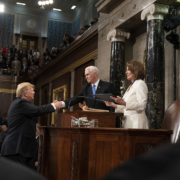The Call for Privacy Regulations of Big Tech Companies
By CHHS Extern Jaime McCoy
Big tech companies are currently self-regulated, but that could soon change. With members of Congress being younger and more diverse than ever before, it seems to be the perfect time to address the regulation of technology. Congress is currently holdings oversight hearings, and lawmakers are proposing new regulations in a crackdown on how big tech companies’ use and resell their customers’ personal information. The need to know what big tech companies are doing with consumers data is a growing need that policymakers have not adequately addressed in the past. Rep. Jan Schakowsky (D-Illinois) told NPR, “In the last two weeks alone, we learned that Facebook exposed individuals’ private health information that consumers thought was in a protected closed group, and collected data from third-party apps…on issues as personal as woman’s menstrual cycles and cancer treatment.”
The main motivation for stricter privacy regulations is that people want to know how these big tech companies are using their data. The more people are relying on technology and entrusting these companies with their private information, the clearer it becomes that Congress needs to step in and hold these companies accountable.
In the context of the current divisive political climate, it is rare for privacy regulation of tech companies to garner bipartisan support. On Tuesday, March 12, 2019, GOP Senator Josh Hawley (R-Missouri), questioned Google’s senior privacy counsel, Will DeVries, about Google’s tracking policy for the company’s Android mobile devices. It might be surprising to learn that even when users turn off their location tracking services, or even turn off their phone, the company is still gathering data about that devices’ location. DeVries defended this action by stating, “gathering location data is what makes maps work, what makes routing of calls work, and other functions.”
Hawley criticized this defense by responding, “Any robust definition of consumer welfare must acknowledge that [Google and Facebook] have harmed consumers by conditioning participation…on giving away enormous—and growing—amounts of personal information.”
This issue is not exclusive to mobile devices. Social media platforms are constantly gathering data from its users as well. Social media platforms offer free access to users, once they agree to the terms and conditions. But are these services actually free? Big tech companies make billions of dollars each year by selling advertisers insight information from the data users share on their platforms. This data is gathered from the website users visit, the posts users like on social media, and even users locations.
Most users do not normally read the Terms of Conditions before agreeing to their terms. These terms are normally lengthy, filled with legal jargon and updated frequently, making it difficult for the average user to fully understand what they are agreeing to. Tech companies should be required to inform their users upfront what data they will be collecting and what they plan on doing with that information.
Currently, some states have taken it upon themselves to enact privacy legislation that is lacking at the federal level. However, due to the global reach of technology, separate state legislation would eventually be problematic for tech companies and consumers. Dave Grimaldi of the Interactive Advertising Bureau said, “The Internet is global, it most certainly goes over state lines. And I think that changing or altering the Internet experience to state to state would be something that would be a giant turnoff to consumers and just wouldn’t help anyone.”
Unfortunately, it is very unlikely that big tech companies will stop gathering data from users. Furthermore, having states coming up with their own solutions to this issue is not the answer, as it would create greater problems for tech companies and consumers. The best resolution would be for Congress to require big tech companies to disclose what they are doing with the data collected. Congress should also consider putting requirements in place for how and what information these companies can disclose to advertisers. In regards to the terms and conditions, companies should be mandated by Congress to simplify the wording for the common user that does not have a technology background. This standard could be in line with the reasonable person standard. It is important that Congress begin to regulate big tech companies in regards to the data they are collecting from users and what they are doing with that information. Without this regulation, users are disclosing more information than the may realize to data consumers who could potentially disclose that information in the long run.











